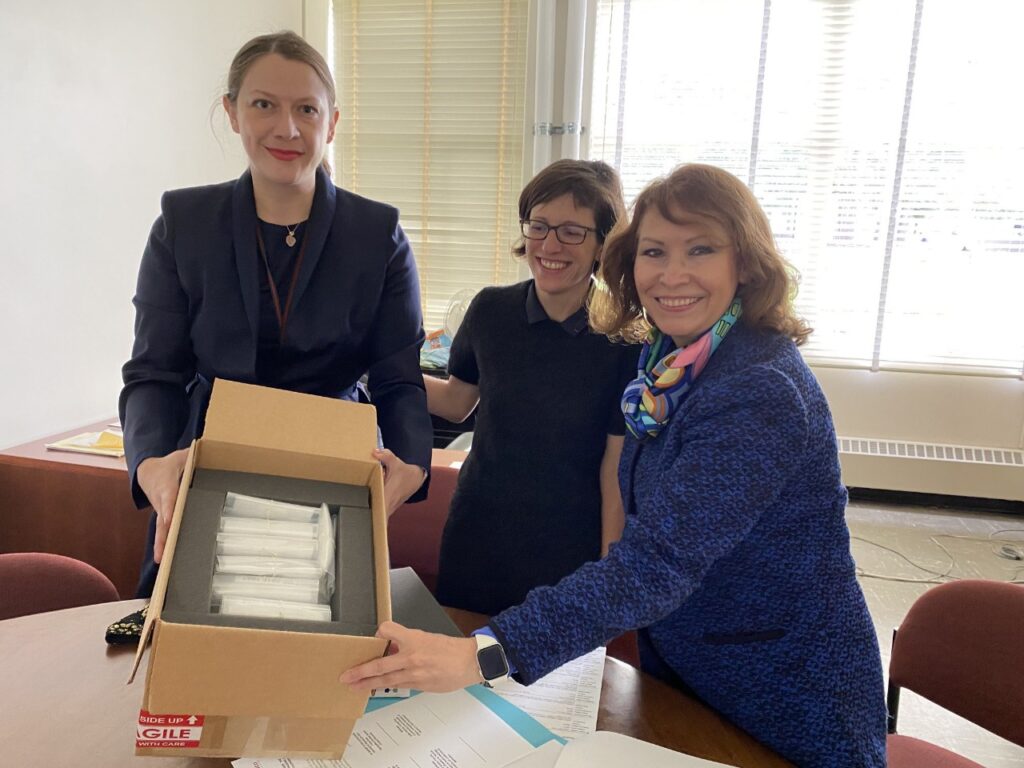
El Consulado General de México en San Francisco informó que este martes 29 de junio, el Museo de Antropología «Phoebe A. Hearst» de la Universidad de Berkeley, restituyó 18 piezas arqueológicas del periodo precolombino al Gobierno de México.
Previo a este procedimiento, detalló el consulado, las piezas fueron dictaminadas por el Instituto Nacional de Antropología e Historia ‒INAH‒, determinando que 11 piezas corresponden al estilo Teotihuacano que se desarrolló en el altiplano central de Mesoamérica, en el periodo clásico, específicamente desde el 200 d.C. hasta el 600 d. C.
Asimismo, destacó que las 7 piezas restantes son de manufactura prehispánica procedentes de Mesoamérica. De éstas, 2 corresponden al estilo Mexica que data del 1325 d.C. al 1521 d.C.
El Gobierno de México, representado por el Consulado General de México en San Francisco, reconoció y agradeció la acción como un «gesto amigable y desinteresado» por parte del Museo de Antropología «Phoebe A. Hearst» y a la Universidad de California, Berkeley.
«Cabe recordar que para el Gobierno de México es una prioridad promover la colaboración a escala internacional a fin de efectuar la restitución y protección de bienes culturales de nuestro país, y así combatir la venta y el tráfico de nuestro patrimonio cultural en el exterior», señaló en un comunicado el consulado.
Cabe destacar que el pasado 8 de junio también fueron entregadas al gobierno de México 79 piezas arqueológicas y dos bienes paleontológicos, en el Consulado de México en Los Ángeles, California.
En ese evento, el titular de la Secretaría de Relaciones Exteriores de México, Marcelo Ebrard Casaubon, expresó: «Como ustedes saben es una prioridad para México recuperar su patrimonio histórico y artístico, y esto es un gran gesto de ciudadanos norteamericanos comprometidos con la civilización mexicana y que tienen interés en que se reintegren estas piezas a nuestro país, así que estamos muy agradecidos con ustedes».
Entre los bienes entregados se encontraron objetos pertenecientes a las culturas maya, zapoteca, teotihuacana, así como de la tradición Tumbas de Tiro y de las asentadas en el Altiplano Central, occidente y el Golfo de México.
Destacan de manera particular los bienes paleontológicos: dos placas con impresión de fósiles de peces, en formato de lajas recortadas. Por las características morfológicas y estilísticas, se trata de dos especímenes de la orden Clupeomorpha, provenientes de territorio mexicano.
Te puede interesar: Carmen Aristegui se incorpora al Consejo Rector de la Fundación Gabo

